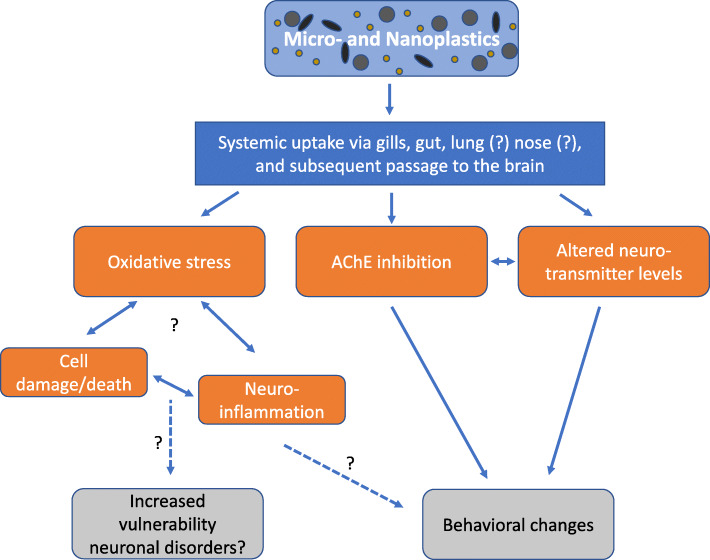Fig. 1.
Overview of the neurotoxic effects of micro- and nanoplastics. Plastic particles can reach the systemic circulation and ultimately the brain via uptake through the gills, gut and possibly also the lungs or directly via the nasal cavity. Once in the brain, micro- and nanoplastics can induce oxidative stress, potentially resulting in cellular damage and neuroinflammation, which may ultimately increase onset and development of neurodevelopmental and/or neurodegenerative disorders. Micro- and nanoplastics in the brain can also results in inhibition of AChE and changes in neurotransmitter levels, which likely contribute to the observed behavioral changes. It should be noted though that most evidence is fragmentary and obtained from different, mainly aquatic species, highlighting the need for extensive systematic research to fully elucidate the neurotoxic potential of micro- and nanoplastics. See Table 1 for details

